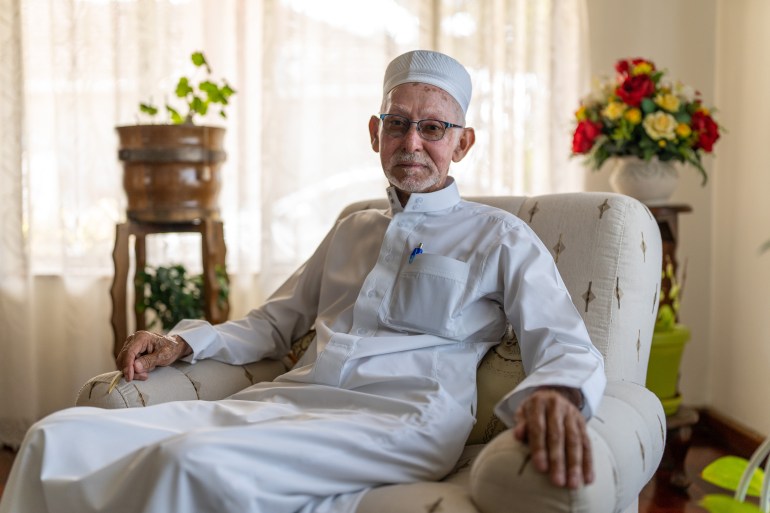A splash of orangey-red streaks across the horizon, announcing the dusk. Below, the Atlantic laps the coastline; a midweek stream of joggers and cyclists shuffle across Cape Town’s Sea Point promenade; and families relax while children play on the grass.
In the 37 minutes between the sun setting and the moon slipping below the horizon, the maankykers (Afrikaans for moon sighters) of South Africa’s Crescent Observers Society are on the clock – working to spot the crescent and announce whether the first day of the Muslim fasting month of Ramadan will begin.
For more than 70 years, maankykers have stood in this same spot, anchoring their gaze to a fixed star on the horizon, before scanning the skies around it.
“See with the naked eye,” says Imam Yusuf Pandy, a slight, bespectacled 82-year-old in a pristine white thobe, black coat and Palestinian keffiyeh draped around his head. He explains the classical Islamic view of the Sunnah, or prophetic tradition, of announcing the start of the next month. “Not with a telescope, but it must be with the eye,” says the oldest and longest-serving active member of the group.
Pandy was chairperson of the all-voluntary maankykers for over 40 years, before handing the position over to Sasman in 2020 and assuming a more honourary role as president. But he has not slowed down, still spending weeks analysing the maps and astronomical data he has neatly stored in files in his home in Lansdowne, before travelling 19km (12 miles) to Three Anchor Bay on the day of the sighting to watch the sky for himself.

The number of maankykers varies, with men joining up, and occasionally leaving, at different times. Currently, about 30 active members are split between four main viewing sites across the Western Cape. Every month, dutifully and consistently, they venture out – “literally come rain or shine”, says Sasman – even amid COVID lockdowns, controversy about whether or not a moon was seen, or intercommunity squabbles about the ideal way to do their job.
His eyes still on the horizon, Sasman furrows his brow beneath half-rim glasses, seeing more than just a striking sunset. “There is a thick haze on the horizon so it’s going to be a little bit challenging …” he trails off, adjusting the Kashmiri shawl on his shoulders and briefly scrolling through his phone.
Nearby, Moulana Abdul Khaliq Allie of the Muslim Judicial Council (MJC), the body in Cape Town responsible for ensuring a moon sighting is Sharia or Islamic-law compliant, gets updates from other parts of the country. “Nationally, they haven’t seen anything,” he tells Sasman, “but they have seen in the neighbouring countries.”
Behind them, a man sounds the adhan, or Muslim call to prayer, and dozens of families who arrived to witness the sighting remove their shoes, place their prayer mats on the grass and face northeast towards Mecca.
The maankykers, some with prayer mats under their arms to use once their main task is done, inch forward to give the congregation more room – their focus never leaving the sky.
“We have 37 minutes, three minutes have passed. At 7.36, we must be done,” Sasman, who in his day job works as a Sharia compliance auditor for the MJC’s Halaal Trust, reminds the others, before picking up his mobile phone to call the captain of the second viewing site at a nearby vantage point on Signal Hill.
